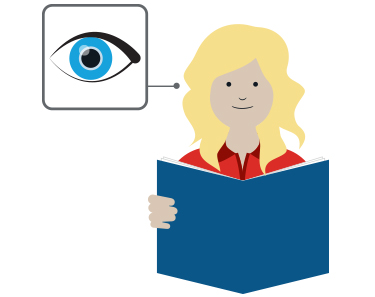
In this series, we are exploring different learning styles. The first way the brain can process information is through images.
Traits of visual learners
Visual learners understand best when they see information. They may not understand spoken instructions. Visual students like diagrams, flowcharts and graphs, and they find handouts helpful, where they can write down what they hear or see as it is being described. Visual learners notice small details, so will remember faces instead of names, and they tend to like balance. They are often quiet students who like to read, draw and do craft. They will watch a situation before getting involved. Visual learners express themselves through creativity.
Visual learners are known to:
- make plans
- make decisions by writing lists
- have a strong imagination and daydream a lot
- understand projects as a whole.
Visual learners often work in areas such as art, fashion, technology, computers and mathematics.
Learning strengths of visual learners
Visual learners can remember 75% of what they see or read, so they take lots of notes. They have a good sense of direction because they can read maps. Their love of balance means they tend to be neat. They often do well in class tests because they remember where the information is and can see it written down. They may like colour. They may also like to be looking at a person who is speaking because it helps them focus.
Learning strategies for visual learners
Recognising if you are a visual learner is a great starting point. If you recognise these traits in your children, or the children you are working with, you can help them to learn these strategies too.
If you are a visual learner, write down the information people tell you and try and work on your own in a quiet place. Study works best if you:
- look at headings and pictures before reading whole sentences
- highlight important words in colour
- write down goals of projects
- sit in a place where you can easily see the teacher
- write your own notes and use charts, maps and graphs where possible
- use hands-on and practical tasks such as building models or doing case-studies – this way you can show that you know how to do something rather than write down steps
- connect new information with concepts you already know so you understand topics as a whole
- brainstorm and use diagrams and mind maps to show how everything you are learning fits together.
Teaching strategies
If you are teaching a visual learner:
- Use lots of different technology to present information such as PowerPoint, videos and photos.
- Organise information well with headings and pictures.
- Let the student be creative and use their imagination.
- After reading information, ask students to close their eyes so they can picture what they have just learnt.
- When teaching, explain to students the reason they need to learn the information, and how it will affect them. Always encourage discussion.
- Use handouts.
- Make sure there are no distractions.
Next: Read all about auditory learners
You can find out more about visual learning at the following websites:
